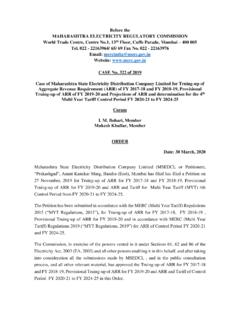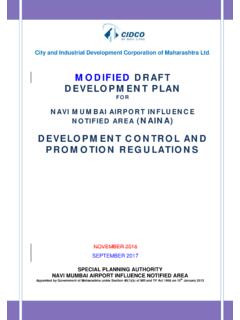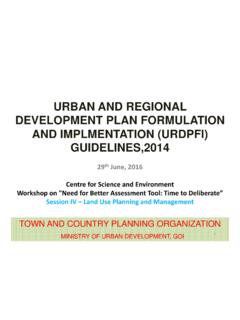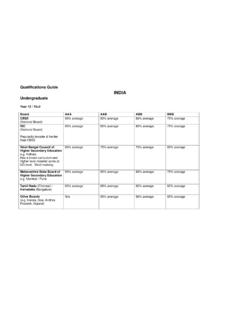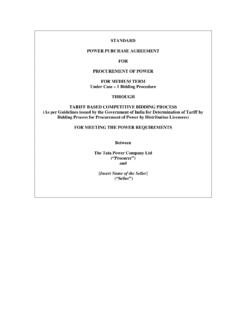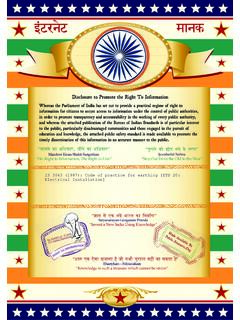Transcription of Dig a little deeper All living things need minerals - NCERT
1 We use different things in our daily life madefrom metal. Can you list a number of itemsused in your house made of metals. Where dothese metals come from?You have studied that the earth s crust ismade up of different minerals embedded in therocks. Various metals are extracted from theseminerals after proper are an indispensable part of ourlives. Almost everything we use, from a tiny pinto a towering building or a big ship, all aremade from minerals . The railway lines and thetarmac (paving) of the roads, our implementsand machinery too are made from , buses, trains, aeroplanes aremanufactured from minerals and run onpower resources derived from the earth. Eventhe food that we eat contains minerals . In allstages of development, human beings haveused minerals for their livelihood, decoration,festivities, religious and ceremonial comes to Guwahati with his fatherfrom a remote sees people getting into strangehouse like objects which move along theroad.
2 He also sees a kitchen dragging anumber of house along with it. He is amazedand asked his father Why don t our housesmove like the one we saw in Guwahati, Ba? Ba replies, These are not houses, theyare buses and trains. Unlike our houses theseare not made of bricks and stones, metal likeiron and alluminium are used in makingthese. They do not move on their own. Theyare driven by an engine which needs energyto work. A bright smile from toothpasteand mineralsToothpaste cleans your teeth. Abrasiveminerals like silica, limestone, aluminiumoxide and various phosphate minerals do thecleaning. Fluoride which is used to reducecavities, comes from a mineral fluorite. Mosttoothpaste are made white with titaniumoxide, which comes from minerals calledrutile, ilmenite and anatase. The sparkle insome toothpastes comes from mica. Thetoothbrush and tube containing the paste aremade of plastics from petroleum. Find outwhere these minerals are found?
3 Dig a little deeper and find out how manyminerals are used to make a light bulb?All living things need mineralsLife processes cannot occur without our mineral intake represents onlyabout per cent of our total intake ofnutrients, they are so potent and so importantthat without them we would not be able toutilise the other per cent of a little deeper and collect NutritionalFacts printed on food is a mineral ?Geologists define mineral as a homogenous,naturally occurring substance with a definableinternal structure. minerals are found invaried forms in nature, ranging from thehardest diamond to the softest talc. Why arethey so varied?2015-16 You have already learnt about rocks. Rocksare combinations of homogenous substancescalled minerals . Some rocks, for instancelimestone, consist of a single mineral only, butmajority of the rock consist of several mineralsin varying proportions. Although, over 2000minerals have been identified, only a few areabundantly found in most of the particular mineral that will be formedfrom a certain combination of elementsdepends upon the physical and chemicalconditions under which the material , in turn, results in a wide range of colours,hardness, crystal forms, lustre and density thata particular mineral possesses.
4 Geologists usethese properties to classify the of minerals by Geographersand GeologistsGeographers study minerals as part of theearth s crust for a better understanding oflandforms. The distribution of mineralresources and associated economic activitiesare of interest to geographers. A geologist,however, is interested in the formation ofminerals, their age and physical andchemical composition. However, for general and commercialpurposes minerals can be classified as OF OCCURRENCE OF MINERALSW here are these minerals found? minerals are usually found in ores . Theterm ore is used to describe an accumulationof any mineral mixed with other elements. Themineral content of the ore must be in sufficientconcentration to make its extractioncommercially viable. The type of formation orstructure in which they are found determinesthe relative ease with which mineral ores maybe mined. This also determines the cost ofextraction.
5 It is, therefore, important for us tounderstand the main types of formations inwhich minerals generally occur in these forms:(i)In igneous and metamorphic rocksminerals may occur in the cracks,crevices, faults or joints. The smalleroccurrences are called veins and thelarger are called lodes. In most cases,they are formed when minerals in liquid/molten and gaseous forms are forcedupward through cavities towards theearth s surface. They cool and solidify asthey rise. Major metallic minerals like tin,copper, zinc and lead etc. are obtainedfrom veins and lodes.(ii)In sedimentary rocks a number of mineralsoccur in beds or layers. They have beenformed as a result of deposition,accumulation and concentration inhorizontal strata. Coal and some forms ofiron ore have been concentrated as a resultof long periods under great heat andpressure. Another group of sedimentaryminerals include gypsum, potash salt and51 minerals AND ENERGY RESOURCESFig.
6 Salt. These are formed as a resultof evaporation especially in arid regions.(iii)Another mode of formation involves thedecomposition of surface rocks, and theremoval of soluble constituents, leaving aresidual mass of weathered materialcontaining ores. Bauxite is formed this INDIA IIRat-Hole Mining. Do you know that mostof the minerals in India are nationalisedand their extraction is possible only afterobtaining due permission from thegovernment? But in most of the tribal areasof the north-east India, minerals areowned by individuals or communities. InMeghalaya, there are large deposits of coal,iron ore, limestone and dolomite etc. Coalmining in Jowai and Cherapunjee is doneby family member in the form of a longnarrow tunnel, known as Rat hole mining.(iv)Certain minerals may occur as alluvialdeposits in sands of valley floors and thebase of hills. These deposits are called placer deposits and generally containminerals, which are not corroded by , silver, tin and platinum are mostimportant among such minerals .
7 (v)The ocean waters contain vast quantitiesof minerals , but most of these are too widelydiffused to be of economic , common salt, magnesium andbromine are largely derived from oceanwaters. The ocean beds, too, are rich inmanganese us now study the distribution of a fewmajor minerals in India. Always remember thatthe concentration of mineral in the ore, the easeof extraction and closeness to the market playan important role in affecting the economicviability of a reserve. Thus, to meet the demand,a choice has to be made between a number ofpossible options. When this is done a mineral deposit or reserve turns into a MineralsFerrous minerals account for about three-fourths of the total value of the production ofmetallic minerals . They provide a strong basefor the development of metallurgicalindustries. India exports substantialquantities of ferrous minerals after meetingher internal OreIron ore is the basic mineral and the backboneof industrial development.
8 India is endowedwith fairly abundant resources of iron ore. Indiais rich in good quality iron ores. Magnetite isthe finest iron ore with a very high content ofiron up to 70 per cent. It has excellent magneticqualities, especially valuable in the electricalindustry. Hematite ore is the most importantindustrial iron ore in terms of the quantityused, but has a slightly lower iron content thanmagnetite. (50-60 per cent).Dig a little deeper : What is the differencebetween an open pit mine, a quarry and anunderground mine with shafts?India is fortunate to have fairly rich and variedmineral resources. However, these are unevenlydistributed. Broadly speaking, peninsular rockscontain most of the reserves of coal, metallicminerals, mica and many other non-metallicminerals. Sedimentary rocks on the western andeastern flanks of the peninsula, in Gujarat andAssam have most of the petroleum with the rock systems of the peninsula,has reserves of many non-ferrous minerals .
9 Thevast alluvial plains of north India are almostdevoid of economic minerals . These variationsexist largely because of the differences in thegeological structure, processes and time involvedin the formation of : Production of iron ore showingstatewise share in per cent, 2009-102015-1653 minerals AND ENERGY RESOURCESThe major iron ore belts in India are: Odisha-Jharkhand belt: In Odisha highgrade hematite ore is found in Badampaharmines in the Mayurbhanj and Kendujhardistricts. In the adjoining Singbhumdistrict of Jharkhand haematite iron ore ismined in Gua and Noamundi. Durg-Bastar-Chandrapur belt lies inChhattisgarh and maharashtra . Very highgrade hematites are found in the famousBailadila range of hills in the Bastar districtof Chhattisgarh. The range of hillscomprise of 14 deposits of super high gradehematite iron ore. It has the best physicalproperties needed for steel making. Iron orefrom these mines is exported to Japan andSouth Korea via Vishakhapatnam port.
10 Ballari-Chitradurga-Chikkamagaluru-Tumak uru belt in Karnataka has largereserves of iron ore. The Kudremukh mineslocated in the Western Ghats of Karnatakaare a 100 per cent export unit. Kudremukhdeposits are known to be one of the largestin the world. The ore is transported as slurrythrough a pipeline to a port near Mangaluru. maharashtra -Goa belt includes the stateof Goa and Ratnagiri district ofMaharashtra. Though, the ores are not ofvery high quality, yet they are efficientlyexploited. Iron ore is exported throughMarmagao is mainly used in themanufacturing of steel and ferro-manganesealloy. Nearly 10 kg of manganese is requiredto manufacture one tonne of steel. It is alsoused in manufacturing bleaching powder,insecticides and is the largest producer of manganeseores in India. It accounted for one-third of thecountry s total production in a little deeper : Superimpose the mapsshowing distribution of iron ore, manganese,coal and iron and steel industry.










